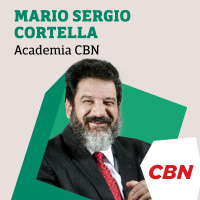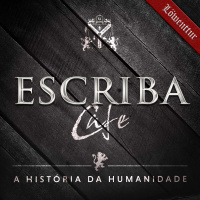Sinopsis
The Traditional Latin Mass, also called the Usus Antiquior, the Tridentine or Gregorian Mass, or the Extraordinary Form of the Mass is notable for its antiquity. In this podcast, Michael Sauter and Joseph Anthony discuss its two-millenia long history and examine its prayers and spirituality.
Episodios
-
The Unity and Theme of the Mass Propers - LMP007
01/03/2017Your browser does not support the audio element. Podcast (30m26s): Play in new window | DownloadNOTE: In another post, we have given the 12th Sunday After Pentecost as a case study in the unity of the Propers. The Unity of the PropersMasses sometimes are called by the first word of the introit. So, for instance, the third Sunday of Advent is called Gaudete and the fourth of Lent Laetare, and the Sunday after Easter is often called Quasimodo Sunday. Each one of these are named after the first words of their introit.Usually a proper Mass has its own Introit, Epistle, Gradual, Alleluia (or Tract), Gospel, Offertory, and Communion. Oftentimes there is a theme that runs through and connects all of these together. In some seasons, such as Advent, the theme can be very strong and obvious. At other times, it can require some reflection to discover.In this podcast, we examine two examples of Masses, the Mass for the Second Sunday of Advent, with it's clear theme of Christ, the savior of the Gentiles, coming
-
Different Types of Masses - LMP006
18/08/2016Your browser does not support the audio element. Podcast (22m03s): Play in new window | DownloadSung and Spoken Masses There are two basic forms of the Latin Mass: the Sung Mass and the Spoken Mass. The Sung Mass is also known as the High Mass, because the priest sings in a "high" (loud) voice, and the Spoken Mass is also known as the Low Mass, because the priest speaks in a low (soft) voice. This distinction is the most fundamental, but it is not the only distinction we can make regarding different "types" of Masses. Private vs. Public Masses, the Conventual Mass, the Mass of the Pre-Sanctified, and others reveal the ways in which the Mass can take on different "characters" depending on certain circumstances or needs. The Sung Mass is most ideal, as singing is the most ancient and most fitting way of offering the Divine Sacrifice. Singing the Mass "decorates" it in such a way as to make it reflect the Heavenly liturgy, giving it more depth and beauty. And it is i
-
The Structure of the Traditional Latin Mass - LMP005
05/06/2016Your browser does not support the audio element. Podcast (15m57s): Play in new window | Download The Two "Dismissals"In looking at the broader structure of the Latin Mass, we can see that there are two basic parts that, historically, correspond to a rather practical reality. As we noted in episode 1, the word "Mass" comes from "missa," which essentially means "the dismissal," Originally, one would go "ad missam," or "to the dismissal," that is, "up to" one of two moments in the Mass as a whole at which a part of the people were dimissed: the dismissal of the catechumens (Missa catechumenorum) or the dismissal of the faithful (Missa fidelium). In the early days of the Church, catechumens (those seeking baptism) were not allowed to witness the offering of the Holy Sacrifice, and were sent out of the church right around the time of the Gospel (and probably before). The reason for this was that the Church took very seriously Christ's admonition to "give not what is holy to the dogs," reserving the holiest my
-
Sacred Music Part II-- Antiphonality and the Chants of the Mas LMP004
21/05/2016Your browser does not support the audio element. Podcast (20m52s): Play in new window | DownloadProper and Ordinary Sung Texts There are, in fact, 10 texts in a Sunday Mass that are sung by the people and the choir. Five of these texts change from week to week, and these are called the sung propers or the proper chants, five remain the same, and these are called the ordinary chants.The proper chants are: The IntroitThe GradualThe Alleluia (or tract in Lent)The OffertoryThe CommunionThe ordinary chants are:The Kyrie (Lord, have mercy)The Gloria (Glory to God in the highest)The Credo (I believe in One God)The Sanctus-Benedictus (Holy, holy, holy)The Agnus Dei (Lamb of God)These are texts of the Mass usually all or in part drawn from the Psalms, the Church's "prayer book." The proper chants are generally comprised of an antiphon and/or verse, and can take on different musical characters. For example, the Gradual tends to be "melismatic" (having many notes for certain syllables in the text; more "ornam
-
Sacred Music Part I - LMP003
07/05/2016Your browser does not support the audio element. Podcast (21m07s): Play in new window | Download Sacred MusicPart I: Chant and Instruments Singing the Mass vs. Singing at MassSacred music by its very nature is music that is set apart for the sacred liturgy. It is different from secular (worldly) music. We speak of sacred and profane music. The word profane does not mean wicked, sinful, or evil; rather, it means, literally "outside the temple" (from the Latin fanum, temple). Music that is admitted into the Mass is considered sacred music, in one way or another. When most Latin Catholics go to Mass, they hear lots of hymns: an opening hymn, an offertory hymn, a communion hymn, a recessional hymn. Hymns are poetic texts sung to simple melodies by the whole congregation. Although 20th century magisterial texts encouraged hymns (for instance, Pius XII in Musicae Sacrae) for their ability to inspire devotion among the faithful, hymns are not actually part of the Mass. But there is music that is
-
Sacramentality & the Cosmic Liturgy -- the Body in Divine Worship - LMP002
26/04/2016Your browser does not support the audio element. Podcast (17m21s): Play in new window | DownloadThe Drama of the Mass: Written into Church Buildings Episode one concluded with a brief mention of the role of drama in the Mass. The Mass is that sacramental (or mysterious) sacrifice Jesus that breaks down the divisions between God and man by pleasing the Father so much, through the obedience of His Son on the altar, that it more than makes up for the debt of sin. Since this is not a bloody, but a sacramental, sacrifice, the death of the Lord is made present not through the blood and glore of the cross, but through the double consecration of the bread and the wine, and through all of the details of the Mass which act as a dramatic representation of that sacrifice. The symbols and drama of the Mass speak not only of the sacrifice of Christ, but also of the unity that God wants to establish between heaven and earth, between God and all of creation, “in the fullness of time, to unite all things in Christ, t
-
What is the Mass -- A Sacrifice More Pleasing than Sin Displeases - LMP001
20/04/2016Your browser does not support the audio element. Podcast (19m04s): Play in new window | Download The Latin Mass ProjectInspired by a talk on the history and prayers of the Traditional Latin Mass, also called the Tridentine Mass, Gregorian Mass, the Extraordinary Form of the Roman Rite, the usus antiquior, etc. etc., the Latin Mass Project aims to provide a series of reflections on the history, spirituality, and text of the ancient Roman Mass. What is the MassThe word missa comes from the last words of the Mass in Latin: Ite, missa est. Some have speculated that missa comes from the verb mitto, (which we also get the word "mission" from), meaning a sending. Does Ite, missa est mean "Go, you are sent" or: "Go, you have a mission"? No!The truth is a bit more prosaic. Missa est in ancient Rome simply meant: This is the dismissal, and the word "dismissal" comes from missa. So the whole Mass is named after the word "dismissal". There probably is some reason in providence for this, but it doesn't














